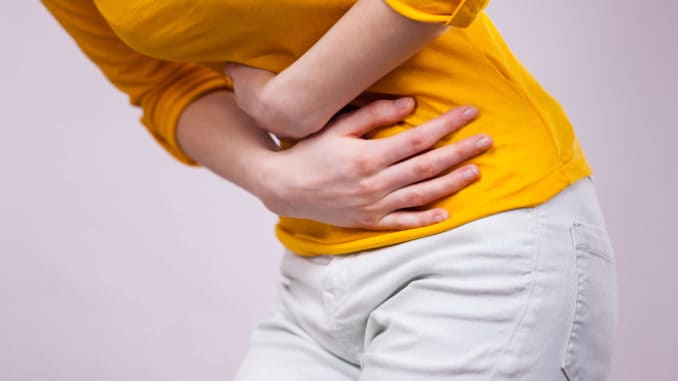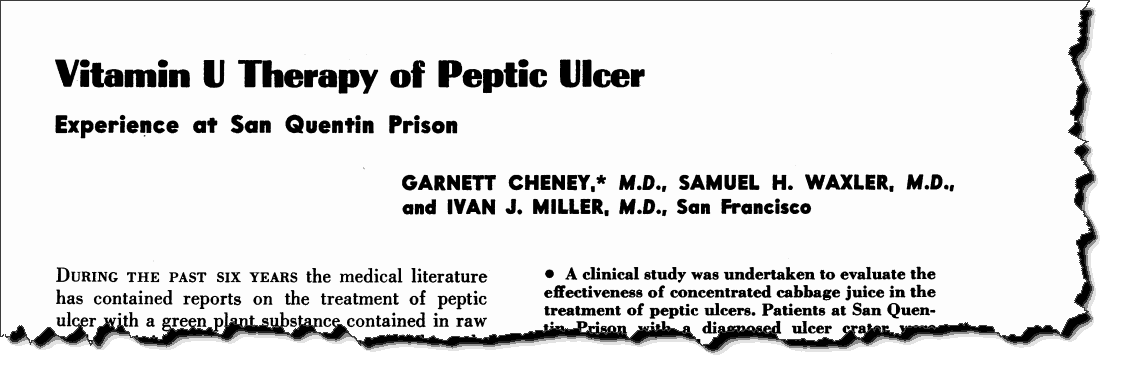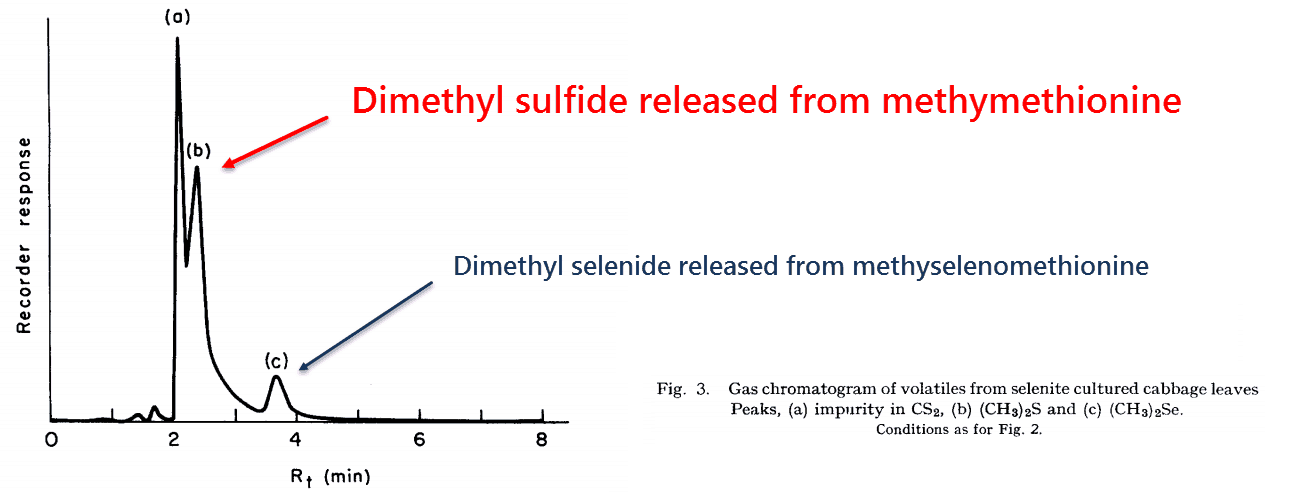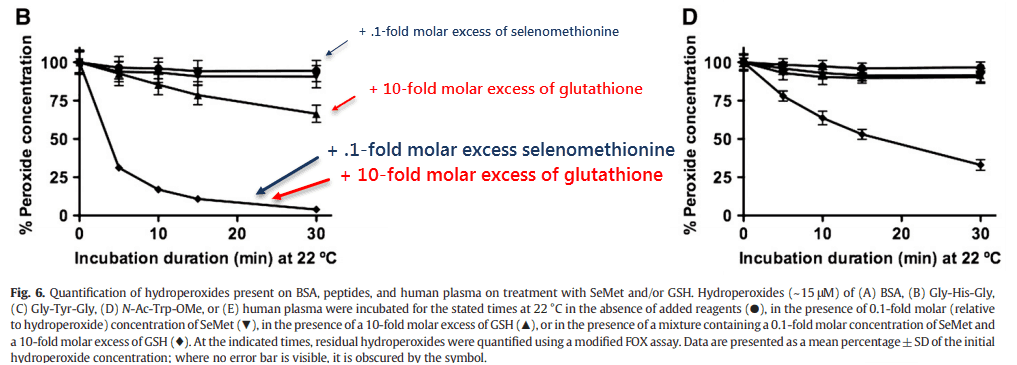
[cmamad id=”24788″ align=”center” tabid=”display-desktop” mobid=”display-desktop” stg=””]
Research shows it can naturally cure ulcers and wounds anywhere in the body…
—-Important Message from Our Sponsor—-
Better than morphine, safer than Aspirin?
Since the 1930s, naturopathic doctors have been on a quest to find the “Holy Grail” of pain relief.
A remedy that blesses you with the pain-killing rush of opioid drugs such as morphine… but without the risk of addiction or overdose.
Little did they know, a Columbia University MD already found the “Holy Grail” back in the 1970s.
This doctor discovered a powerful, natural painkiller. It works with your body’s natural mechanisms to renew your achy joints from the inside out.
And, in fact, it’s so effective at stopping pain, even some mainstream doctors are now saying it’s better than morphine… Yet safer than aspirin!
Here’s how to use this Columbia U doctor’s discovery to be pain-free in as little as 24 hours.

———-
Are you low in vitamin U?
Between 1940 to 1956, Doctor Garnett Cheney conducted a series of experiments to look into out how diet relates to ulcer formation.
As a result of this process, he identified L-methylmethionine as the highly potent anti‑ulcer compound naturally present within certain foods.

Dr. Cheyney named it “vitamin U” because he found that it prevents ulcers from forming. He also showed that it rapidly heals ulcers already present.
The letter “U” here stands for the word “ulcer,” breaking convention in the alphabetical–chronological naming of vitamins due to this unique effect.
“Experimental studies previously carried out showed that an ‘anti-gizzard erosion factor’ would prevent the development of erosive lesions in chicks’ stomachs…”
Results on both animal and human subjects have been spectacular, to say the least.
Yet this could have been predicted after considering what’s known about ulcer formation today.
Some newer science, beginning around 1985, implicated free radicals in the process of ulcer formation…
Specifically, this is the hydroxyl radical (OH•) – which then goes on to induce lipid peroxidation in cell membranes.
In addition, the hydroxyl radical has also been shown to depolymerize hyaluronan.
That’s a polysaccharide similar to the ones that comprise 50% to 80% of mucin by mass.
Hydroxyl radicals have also been shown to depolymerize mucin directly.
This process lowers its viscosity and also its ability to protect the stomach.
And, as it turns out, acid doesn’t play much of a role in the process of ulcer formation.
As long as the mucin layer is intact, even strong acids have no effect:
“Preliminary studies in our laboratory revealed that 0.1 N HCl (hydrochloric acid) by itself did not produce mucosal injury.”
So, it’s bad enough that antacids and proton pump inhibitors cause side effects such as impaired digestion.
But they are also relatively ineffective compared with certain antioxidants such as vitamin U.
There are far better things to take than Tums® and Prilosec®…
And vitamin U just happens to be one of the most effective antioxidants, as you will see…
And vitamin U is also completely natural and virtually non‑toxic.
Yep, the L-isomer of vitamin U is completely natural and essentially non‑toxic.
Some companies sell a racemic form that also includes L-methylmethionine…
That form is potentially dangerous – and also relatively inactive.
This is because L-methylmethionine is actually a cofactor for a newly discovered methyltransferase enzyme…
This makes it its stereochemical configuration of prime importance.
There’s also another reason why most commercial brands of vitamin U would be less effective than the forms used by Dr. Cheney…
But, first of all, here is proof that vitamin U is extremely effective in healing ulcers:

Cheney gave 100 human patients vitamin U, either in the form of raw cabbage juice or a freeze‑dried extract.
And they monitored ulcer progression using barium X‑rays.
[cmamad id=”24789″ align=”center” tabid=”display-desktop” mobid=”display-desktop” stg=””]
They used cabbage juice specifically because previous animal studies showed that it contains the highest levels of vitamin U.
And, incidentally, later studies proved that Brassica species (e.g. cabbage, kale, broccoli) volatize sulfur by using L-methylmethionine.
Vitamin U decomposes into homoserine and dimethyl sulfide, a volatile gas…
This is actually the very reason why cooked cabbage smells funny:

The participants consumed one liter of cabbage juice per day (or the freeze‑dried equivalent).
And nearly all of them experienced a rapid reduction in pain after that.
“…there were 92 patients suitable for study of pain relief… 86 of them (95.9%) were pain-free within two weeks, and 81% of the total were symptom-free within one week… 61 of the patients were pain-free within four days. The average time from beginning of therapy to relief of pain in the 86 cases was 3.92 days.”
Not surprisingly, this correlated with a shortening of healing time.
It went from (on average) 37 to 49 days reported under standard therapy to just 13.1 days.
This shorter healing time includes ulcers in all locations: gastric, duodenal, and jejunal.
Ulcers in the stomach healed nearly as quickly as duodenal ulcers (14 days vs 12.9 days).
And that’s another indication that acidity has little to do with ulcers.
The pH of the duodenum is actually basic because bile is released there.

This points to another factor that has been falsely implicated in ulcers: bile salts.
That hypothesis has no convincing molecular basis and never has.
It was shown decades ago that healthy patients have as much bile reflux as control subjects.
“There was no difference between patients and controls with respect to gastric emptying rate, bile acid reflux rate, intragastric amount of bile acids, and bile acid composition in the fasting state.”
The free radical etiology of ulcer formation has the most evidence in its favor – a process placing antioxidants such as L-methylmethionine at the front line.
As you can see, vitamin U works far better than the standard treatment..
The standard treatment in the 1940s and 1950s relied primarily on reducing stomach acid.
Yet the vitamin U study above could be criticized for not having a control group.
And maybe that’s why Dr. Cheney went on to conduct a more formal study.
Even before Johnny Cash, Dr. Garnett Cheney visited San Quentin Prison in California:

This was a randomized, double‑blind, placebo-controlled study to ascertain the efficacy of vitamin U.
Cheney initially selected 50 inmates with ulcers were initially selected to participates. Thirteen patients dropped out, leaving 37 for data analysis.
He gave them vitamin U in the form of cabbage juice concentrate, water, and syrup mixed together.
And he stored the mixture in bottles designated MK‑72.
The placebo group received the same bottles but without vitamin U…
And their respective identities were hidden by coding unknown to everyone other than Cheney.
“The Neumiller Hospital section of San Quentin Prison, San Quentin, California, was chosen as the locus operandi of the experimental study.”
After three weeks, ulcers healed in 92.3% of the vitamin U group.
Only 31.6% of the placebo group achieved this.
This of course represents a threefold increase in success.
Note that this experiment was conducted under prison conditions, which is about as controlled as you can get.
These inmates all ate the same food, drank the same water, and lived in identical cells. They could not leave except to receive the barium X‑rays used for the study.
Moreover, the timing and dose of the vitamin U was precisely enforced by prison guards.
But that study was pretty much the end of anti‑ulcer vitamin U research.
Maybe this was because the medical mainstream jumped on a far more profitable horse – lowering stomach acid.
And they flogged that horse to death with proton pump inhibitors.
This wasn’t the end of vitamin U research exactly… only as it relates to treating ulcers.
Studies involving this molecule did persist under a different name – L-methylmethionine – and still continue to this day.
Methylmethionine was long assumed to be a minor metabolite in the body in terms of importance.
But about a decade ago it was shown to be specific for a certain enzyme:

Only recently had this enzyme been formally studied.
Because it is similar to betaine‑homocysteine, they named this enzyme S‑methyltransferase type‑1, which methylates homocysteine using betaine.
These scientists discovered that the type‑2 isoform actually uses L-methylmethionine as a methyl donor, not betaine.
So the enzyme’s name is actually a misnomer.

So it’s official now: L-methylmethionine is an enzymatic cofactor.
This is important because the enzyme that uses it (MHMT‑2) methylates homocysteine with it.
In effect, this eliminates a powerful free radical formed constantly within the body.
The homocysteine radical is especially dangerous because it can cyclicize into a thiolactone form – an oil‑soluble and stable free radical.

This molecule can go everywhere, and is likely why plasma homocysteine correlates so strongly with brain lipid peroxidation:
Homocysteine measured in the cerebrospinal fluid has been calculated to have a correlation coefficient of r = .924 against hydroxynonenal.
That is a sensitive index of lipid peroxidation.
A correlation coefficient of r = 1 is as perfect as it gets. On a graph it is represented by perfect straight line.
Brain concentrations of homocysteine are also highly correlated with plasma homocysteine (r = .850).
That indicates the ease in which it passes through lipid membranes.
And also, the methylation of homocysteine by BHMT‑2 (betaine-homocysteine S-methyltransferase 2) produces methionine.
And that can then go on to become S‑adenosylmethionine and participate in choline synthesis.
Choline forms an essential part of lipid membranes as phosphatidylcholine…
Perhaps that is why choline deficiency has been shown to induce ulcers.
“The prolonged feeding of diets low in choline but containing over 20% protein resulted in a severe nutritional edema and duodenal ulcers in 6 of 7 deficient dogs.”
So L-methylmethionine has been shown to reduce homocysteine, a dangerous molecule, while acting towards regenerating choline in the process.
This could be the molecular basis behind its notorious ulcer‑healing properties.
The products of the BHMT‑2 enzyme reaction are not one, but two molecules of methionine:

Methionine has also been shown to be a powerful scavenger of monochloramine, another molecule implicated in causing ulcers.
Monochloramine (NH2Cl) is formed when ammonia (NH3) produced by gut bacteria reacts with hypochlorite (OCl−), a specific product of the neutrophils that attack it.
The result is monochloramine, a molecule shown to penetrate the cell’s nucleus and induce DNA damage.
This is almost certainly why H. pylori has been so consistently correlated with gastric cancer:

In scavenging monochloramine, methionine has been shown to be a more effective than taurine at the same concentration.
Methionine has also been found far more effective than trolox, ascorbate, glutathione, and urate in doing this.
Nothing has been shown to be more effective than methionine in scavenging chloramines:

Methylmethionine could be even more effective because of its increased lipid solubility.
Higher lipid solubility tends towards increased adherence to the stomach lining.
Yet, once inside the cell, the enzyme BHMT‑2 would transform methylmethionine into two methionines at the expense of homocysteine.
“However, during November 1948, a concentrate of cabbage fat has completely protected ten guinea pigs from histamine-induced peptic ulcers when it was fed at the level of 100 mg per day to a 300 gm animal.”
So L-methylmethionine should be especially effective at healing ulcers associated with H. pylori, (the particular gut bacteria involved). And this effect no doubt contributes to its efficacy.
Vitamin U may also help protect against gastric cancer…
The use of proton pump inhibitors cannot boast of such high ulcer healing rates over placebo. And they’re potentially dangerous besides.
“In some cases these effects parallel each other, e.g. excess methionine removes chloramines and also inhibits the formation of radical adducts. In contrast, ascorbate and GSH (glutathione – an antioxidant) enhance chloramine decomposition. But via processes that result, at least in part, in the formation of further radical species from both ascorbate/GSH and the chloramines.”
“This difference might reflect the propensity of these species to undergo two-electron (non-radical) reactions for methionine, and one-electron (radical) reactions for ascorbate/GSH.”
And there’s another reason why we could expect commercial forms of vitamin U to be less effective than raw cabbage juice…
And that’s because Brassica species also contain L-methylselenomethionine.
This is nearly identical to L-methylmethionine – except that it has selenium rather than the sulfur atom…. And that confers unique properties.

Methylselenomethionine most surely was in the vitamin U preparations used by Dr. Cheney to treat ulcers…
And it would have been difficult to separate that from L-methylmethionine using the chemical techniques available at the time.

This is one of the first reports of L-methylselenomethionine in cabbage leaves…
This discovery finally explained why the plant also emits dimethyl selenide in addition to dimethyl sulfide.
They didn’t publish the exact levels of L-methylselenomethionine in the cabbage.
But its concentration relative to L-methylmethionine can be estimated by the gaseous products they reported:

If cabbage is grown in selenium‑rich soil, you could expect roughly a 10∶1 ratio of vitamin U to its un-selenized form.
This is important because selenomethionine can do something methionine cannot…
It can scavenge peroxynitrite and protein‑bound hydroperoxides.
“In this study it has been shown that SeMet (selenomethionine) can act as a peroxidase mimic to achieve rapid and efficient removal of these hydroperoxides. The selenium atom seems to be crucial for this peroxidase function, as little activity was detected with the sulfur analog Met.”
The process transforms selenomethionine into a selenoxide, a safe unreactive molecule, which is then regenerated back into selenomethionine by glutathione.
This means that it works even at low catalytic concentrations.
This could be how selenomethionine lowers prostaglandin production so efficiently.
By removing reactive peroxynitrite from the cell, selenomethionine is eliminating one of the precursors to prostaglandin…
Selenomethionine works synergistically with glutathione to repair proteins, shown below, and also to inhibit pain‑inducing prostaglandins.

This could be why selenomethionine is so effective in preventing cancer.
In fact, it’s effective even in low amounts (often a mere 400 μg selenium per day).
Also, we need the selenium atom to form antioxidant selenoenzymes such as glutathione peroxidase.
So commercial vitamin U is less effective than raw cabbage because it contains the enzymatically inactive D-isomer.
But we would also expect it to be less effective because it lacks L-methyl selenomethionine.
Raw cabbage is necessary in this case because cooking transforms vitamin U into homoserine and dimethyl sulfide…
That’s the molecule responsible for that peculiar “cooked cabbage smell.”
And of course, the selenium version of vitamin U is also transformed into homoserine and dimethyl selenide by cooking.
Yet the specific anti‑ulcer effects of cabbage can be approximated by supplementing with L-methylmethonine and L-selenomethionine together.
And this would save the time and effort involved in juicing raw cabbage.
“Usually about 2 kg. of cabbage was fed into the press to obtain 1,000 cc. of juice…”
“…but also demonstrated that after he had received 9,000 cc. of cabbage juice over a nine-day period, the crater had filled in nicely as part of the healing process of the peptic ulcer.”
—-Important Message—-
3 drops of this mineral amplifies your sex drive overnight
There’s one key mineral that men need in order to produce a lot of testosterone.
But most men are deficient in it. And they don’t even know it.
This key mineral kick-starts your Leydig cells into making more testosterone and other important sexually-charged hormones…
So your sex drive spikes, your testosterone rises, and your confidence soars.
And you only need 3 drops. It starts working right away.
Here’s how to use this key mineral to boost your sex drive naturally.

———-

- Cheney, Garnett. "Vitamin U therapy of peptic ulcer." California medicine (1952)
https://www.ncbi.nlm.nih.gov/pmc/articles/PMC1521464/pdf/califmed00220-0037.pdf - Cheney, Garnett. "Vitamin U Therapy of Peptic Ulcer: Experience at San Quentin Prison." California medicine (1956)
https://www.ncbi.nlm.nih.gov/pmc/articles/PMC1532869/pdf/califmed00265-0097.pdf - Lewis, B. G. "Volatile selenium in higher plants the production of dimethyl selenide in cabbage leaves by enzymatic cleavage of Se-methyl selenomethionine selenonium salt." Plant and Soil (1974)
https://link.springer.com/article/10.1007/BF00011413 - Rahmanto, Aldwin Suryo. "Catalytic activity of selenomethionine in removing amino acid, peptide, and protein hydroperoxides." Free Radical Biology and Medicine (2011)
https://www.ncbi.nlm.nih.gov/pubmed/22015433 - Szegedi, Sandra. "Betaine-homocysteine S-methyltransferase-2 is an S-methylmethionine-homocysteine methyltransferase." Journal of Biological Chemistry (2008)
http://www.jbc.org/content/283/14/8939.full.pdf
- The Use Of Vitamin U For Gastric Ulcer Recovery
https://www.clinicaleducation.org/resources/reviews/the-use-of-vitamin-u-for-gastric-ulcer-recovery/ - Peptic ulcer
https://www.mayoclinic.org/diseases-conditions/peptic-ulcer/diagnosis-treatment/drc-20354229
